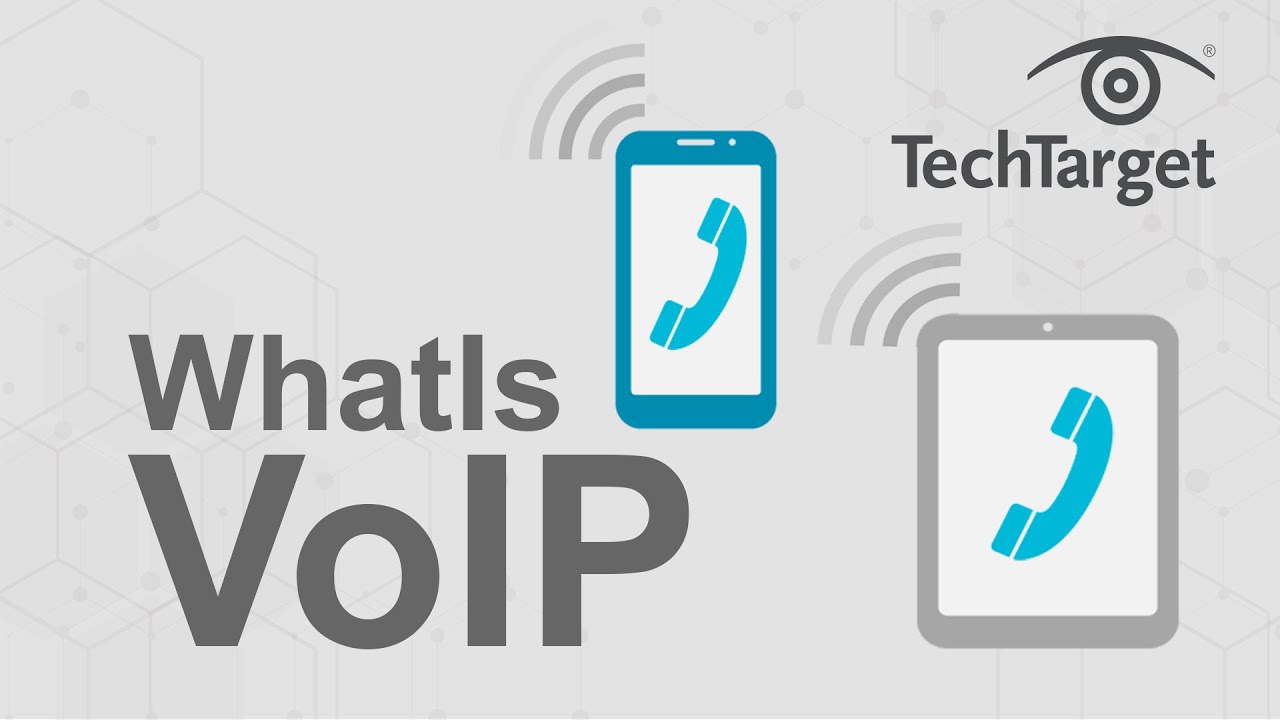
The global IP telephony market was valued at over $2980 million in 2023 and is widely expected to keep growing year-over-year. That suggests a noticeable change in the technology that’s favored for communications.
Consumers, especially businesses, are increasingly moving away from traditional landline-based systems and turning to IP telephony solutions.
It’s about time for you to get familiar with IP telephony, learn how the tech works, and discover the possible benefits.
Key takeaways:
- IP telephony is a term with a broad meaning. It refers to any phone or communications system that sends and receives voice data via an internet connection.
- An IP telephony system uses Internet Protocols to transform audio into digital data packets and transmit those packets over the internet.
- Some of the most common Internet Protocols involved with IP telephony services include Session Initiation Protocol (SIP), the H.323 protocol, and Real-time Transport Protocol (RTP).
- Benefits of IP telephony over traditional, landline-based systems include that it’s more cost-effective, scalable, and flexible.
What is IP Telephony?
Internet Protocol or IP telephony refers to any phone system which uses an internet connection—rather than the traditional Public Switched Telephone Network (PSTN)—to facilitate calls.
IP telephony arrived on the market in 1995, causing massive changes in the telecommunication industry. Today, many carriers are using IP either for a part or all of their services. It has increasingly become the favored method for data communication.
IP telephony uses Internet Protocol’s packet-switched connections to enable various communication services. These services include voice calling, voicemail, video calling, conferencing, faxing, and instant messaging (IM). All you need is a reliable internet connection and a one-time app download.
Both consumer applications for quick, free calling and business solutions with advanced call center software features are examples of IP telephony.
How Does IP Telephony Work?
When it comes to how IP telephony works, you first need to understand what Internet Protocol (IP) is. IP is the fundamental protocol for communicating data over the internet.
The protocol defines how signals should travel over modern networks. Similarly to HTTP (HyperText Transfer Protocol), it sets how data will be transmitted, formatted, and displayed in web servers, as well as web browsers.
In the case of IP telephony, the protocol works by scanning and consequently identifying speakers’ analog voice signals and turning them into a digital version of these signals (often described as data packets).
After transformation, the digital signals are transmitted over the internet. As they travel through connected networks, devices like routers work to direct them to their final destination. Once there, the data packets are transformed back to audio. All this can be done instantaneously.
IP telephony encompasses a range of different systems. Most notable are IP PBX setups and VoIP-based solutions.
When signals transmitted via the internet protocol reach IP PBX, they get transferred to a Local Area Network (LAN). The final part of their journey is then completed on the PSTN (Public Switched Telephone Network).
With a VoIP-based system, the PSTN part isn’t needed. And that’s not the only difference between VoIP and IP telephony.
Find the Perfect VoIP Package for Your Business

IP Telephony vs VoIP: What’s the Difference?
IP telephony and VoIP are terms often used as synonyms. While that’s understandable, it’s not entirely correct. There are some notable differences between IP Telephony and VoIP (Voice over IP).
IP telephony is a term with a very broad meaning. It refers to any system that transmits voice and data using internet protocols. That can include IP PBX systems that utilize traditional hardware and similar setups connected to the PSTN via SIP trunking..
Voice over Internet Protocol (VoIP), meanwhile, is a more specific type of technology. In the strictest sense, the term refers only to technology that transmits voice calls over the internet.
We can say, therefore, that VoIP systems are a subcategory of IP telephony.
Therefore, IP telephony and VoIP work together, for example in calling solutions like CloudTalk’s IP cloud PBX. They enable cheap or free calls and add more features to telephone communications.
Here are further insights into VoIP voice systems and how they work:
6 Most Used IP Telephony Protocols
We’ve mentioned internet protocols a few times. IP telephony solutions rely on many open-source protocols to transfer data from phones to the IP telephony service provider and then to the final destination. Which protocol a particular IP telephony solution uses depends on how the system is set up, and on the provider.
Here Are 6 of the Most Common Protocols:
- SIP
- H.323
- RTP/RTCP
- RTCP
- SRTP
- SDP
#1 SIP
SIP stands for Session Initiation Protocol. It’s a signaling protocol used for establishing a session between two or more participants, modifying it and eventually terminating it.
An advantage of SIP is that it strongly resembles HTTP. In both cases, messages are text-based and a request-response mechanism eases the troubleshooting process.
The role of SIP messages is to describe the identity of call participants and how they can be reached over an IP network. SIP figures out the type of media channels that are going to be established for the session and how media engines will connect.
Once the exchange of setup messages terminates, the media is switched using another protocol. Typically, it is Real-time Transport Protocol (RTP), which we’ll discuss later.
SIP protocol is designed to be extensible. It is better suited for keeping up with a modern market and technical needs of the IP telephony industry.
#2 H.323
Similar to SIP, H.323 was designed for the setup, managing and terminating of a media session. It was an early forerunner of SIP, widely used to define the basic call model. It also covered the supplementary services needed to address modern business communication expectations.
However, a significant disadvantage of H.323 is that it’s a binary protocol, which makes it a bit more technically challenging. Its features need more time to be defined, standardized and implemented. That’s why it was almost completely replaced by SIP.
#3 RTP
Real-time Transport Protocol (RTP) features a packet format for the audio and video transmission across the internet. It is used mainly in entertainment and communication systems which involve streaming media—video teleconference applications, television services, and web-based push-to-talk features, as well as telephony.
This protocol is mostly implemented together with another one, RTCP, about which we will talk next. While RTP carries the media stream—audio and video—RTCP monitors transmission statistics and QoS (Quality of Service), and helps to synchronize multiple streams.
RTP is also used in conjunction with SIP which assists in setting up the connection across the network. As a principle protocol for transporting data, Real-time Transport Protocol is certainly one of the foundations of IP telephony and VoIP systems.
#4 RTCP
RTCP stands for Real-time Transport Control Protocol and, as we explained above, it works hand in hand with RTP.
While RTP delivers the actual data, RTCP sends control packets to participants in a call. Its primary function is to give feedback on the quality of service provided by RTP.
RTCP therefore transports information and statistics. Software can use this data to control QoS parameters. Real-time Transport Control Protocol, as well as RTP, doesn’t provide any flow encryption or authentication methods, yet these mechanisms may be implemented by the next protocol, SRTP.
#5 SRTP
SRTP, or Secure Real-time Transport Protocol, was created in 2004, as an extension profile of RTP. It adds more security features, like message authentication, confidentiality, and replay protection, mostly intended for IP telephony / VoIP communication.
SRTP uses security methods—authentication and encryption—for minimizing risks of attacks. It implements AES (Advanced Encryption Standard), and default encryption cipher. SRTP features are optional, and you can individually enable or disable them.
This protocol is flexible and easily accommodatable for new encryption algorithms.
#6 SDP
Session Description Protocol (SDP) is a standard of defining multimedia communication session types for session announcements and invitations. It’s commonly used in streaming video conferences and VoIP applications.
In a session setup process, there are two endpoints participating. Each of them sends an SDP to inform the other of its specifications and capabilities.
Therefore, SDP by itself doesn’t deliver any media. It simply limits itself to the negotiation of a compatible set of media exchange parameters. The media streams are handled by a different protocol.
In other words, SDP is a declaration, by a media endpoint, of its receiving specification and capabilities.
A typical declaration would tell you:
- Which IP Address is prepared to receive the incoming media stream
- Which port number is listening for the incoming media stream
- What media type the endpoint is expecting to receive (typically audio)
- Which protocol the endpoint is expecting to exchange information in (typically RTP)
- Which compression encoding the endpoint is capable of decoding (codec).
5 IP Telephony Benefits
Now you know how IP telephony works, let’s take a look at the most significant advantages:
#1 Cut Costs
As mentioned, when using IP telephony technology instead of traditional phone systems, companies only need an internet connection to make phone calls. This fact lowers operational spending and phone call fees.
Your only charges are for the internet and IP telephony software. There is no need to pay telephone companies for analog lines.
Also, long distance and international calls are less expensive with IP telephony solutions.
#2 Easily Integrate With Your CRM
Another advantage of IP telephony is that you can more easily integrate calling solutions with existing software. For instance, you can combine data from your CRM, e-commerce, helpdesk, and accounting platforms into a single unified call center system.
The possibility to centralize data provides more effective, consistent customer service that can be used across multiple channels. That lets your agents get information faster and increases their productivity.
IP telephony also changes how you communicate with your clients. You can reach them exactly where they are, and therefore improve customer satisfaction.
#3 Scale Up and Down Easily
Unlike traditional analog phone systems, solutions based on IP telephony are truly easy to scale.
You can quickly add new lines or remove unnecessary ones, which enables you to scale up and down however you need. You also don’t have to pay separately for incorporating other phone lines.
The deploying of new lines doesn’t require any special technical skills. It can be done easily via an online interface. No programmer needed, since IP telephony doesn’t have a complexity of proprietary software or graphical user interface.
#4 Support Remote Working
People can easily get used to doing their job from home, assuming they have the right technology. IP telephony gives you a seamless solution to work fully remotely, since there is no need for hardware. Therefore, there is nothing that ties your agents to one location.
By choosing effective cloud-based calling software, such as CloudTalk, they can be anywhere in the world while you can monitor them via features like call recording or call monitoring.
#5 Access a Wide Range of IP Telephony Features
Businesses that use IP telephony systems can do so much more than just calling.
IP-based solutions help you revolutionize communication with clients and customers, due to a rich portfolio of advanced features.
For example, you can customize a caller’s journey with an IVR tool, while workflow automation allows you to automate unnecessary tasks and streamline business processes.
You can also easily follow your call center statistics, track contact history of your clients, or create customized tags and notes during phone calls.
Discover 12 crucial call center software features

Futureproof Your Business Communication With IP Telephony
IP telephony is the technology that underpins modern business communications. Being based on internet connections rather than legacy phone networks, it’s scalable, cost-effective, and future-proofed.
What’s more, solutions based on IP telephony give businesses a wider range of features. They also easier integrate with other tools.
CloudTalk offers all that and more. Use some of the most advanced call center software on the market, and make the most of your IP telephony experience.
Get in touch.

















